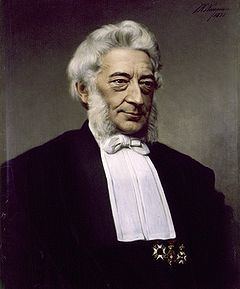Residence Netherlands Role Botanist Name Friedrich Wilhelm | Author abbrev. (botany) Nationality Dutch | |
 | ||
Born 24 October 1811Neuenhaus, present-day Germany ( 1811-10-24 ) Died January 23, 1871, Utrecht, Netherlands | ||
Friedrich Anton Wilhelm Miquel (24 October 1811, Neuenhaus – 23 January 1871, Utrecht) was a Dutch botanist, whose main focus of study was on the flora of the Dutch East Indies.
Contents
Life
Miquel studied medicine at the University of Groningen, where, in 1833, he received his doctorate. After starting work as a doctor at the Buitengasthuis Hospital in Amsterdam, in 1835, he taught medicine at the clinical school in Rotterdam. In 1838 he became correspondent of the Royal Institute, which later became the Royal Netherlands Academy of Arts and Sciences, and in 1846 he became member. He was professor of botany at the University of Amsterdam (1846–1859) and Utrecht University (1859–1871). He directed the Rijksherbarium (National Herbarium) at Leiden from 1862. In 1866, he was elected a foreign member of the Royal Swedish Academy of Sciences.
Work
Miquel did research on the taxonomy of plants. He was interested in the flora of the Dutch Empire, specifically the Dutch East Indies and Suriname. Although he never traveled far, he knew through correspondence a large collection of Australian and Indian plants. He described many species and genera in important families like Casuarinaceae, Myrtaceae, Piperaceae and Polygonaceae. In total, he has published some 7,000 botanical names. Through his partnership with the German botanist Heinrich Göppert, he became interested in paleobotany, the study of fossil plants, notably the fossil Cycads. Along with Jacob Gijsbertus Samuël van Breda, Pieter Harting and Winand Staring, he was in the first commission to create a geological map of the Netherlands, which was published in 1852 by Johan Rudolph Thorbecke.
Legacy
Miquel died at the age of 59 in 1871, after which he was succeeded as the director of the National Herbarium by Willem Frederik Reinier Suringar. From his estate, the Miquel fund was established, which provides financial support to botanists at the University of Utrecht. The former home of the director of the botanical gardens in the city center of Utrecht is called "Miquel's House". In the Laakkwartier district of the Hague is a street named after him.
